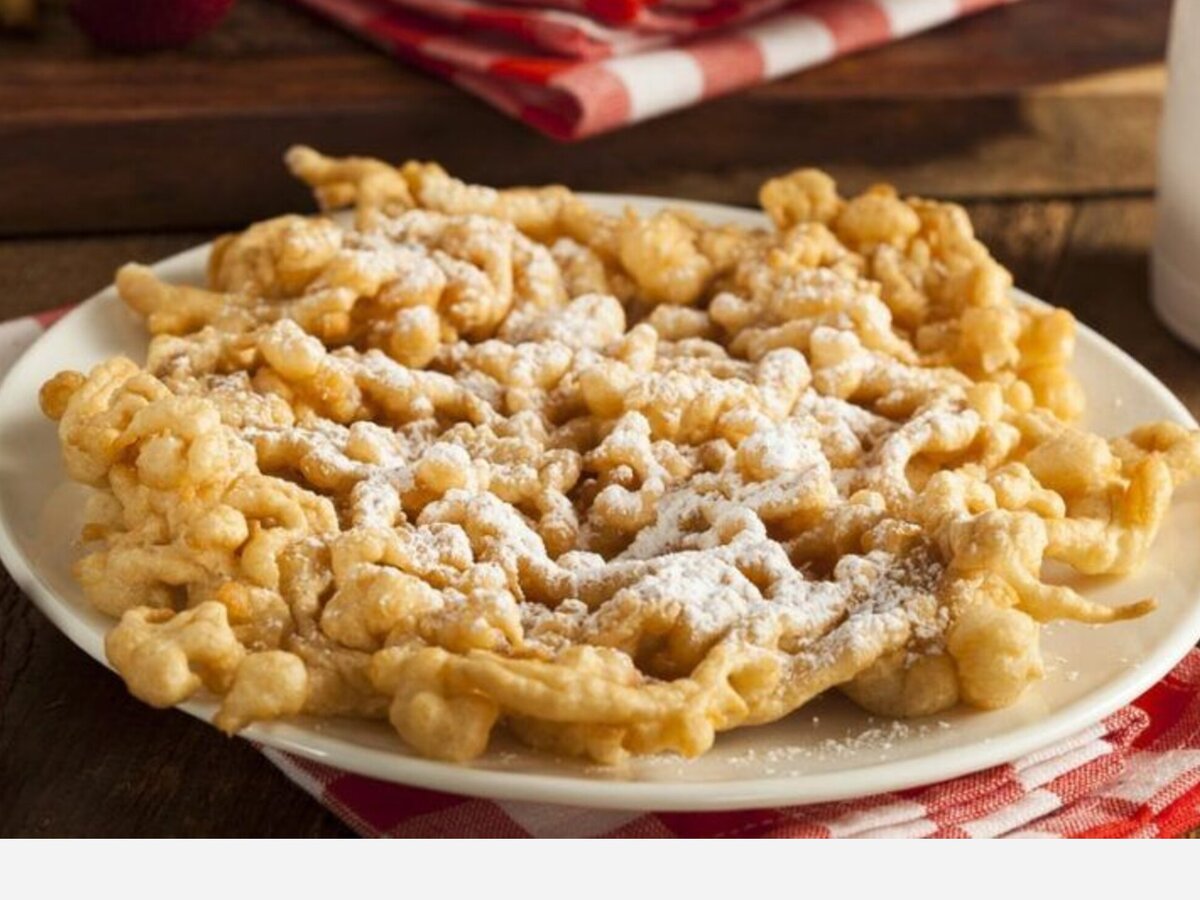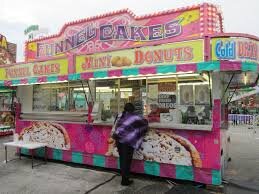Image

The Origins of Two American Fried Dough Classics: Funnel Cakes and Elephant Ears

Fried dough is a delicious treat we usually associate with county fairs and the like since this is where we often consume fried dough treats such as funnel cakes and elephant ears. So, it may surprise you to learn that fried cakes have been around for many thousands of years – perhaps almost as long as tools which were originally used to make them.

According to some sources, fried cakes were first consumed in ancient China and Egypt as long ago as 8,000 to 5,500 BC after the inventions of pottery and the stone grinder allowed for primitive forms of frying and the grinding of grain.
The Roman scriblita, described in 2nd Century BC texts, is thought to be a more recent precursor of fried dough cakes and fritters in particular. This food was made by spooning lumps of sourdough-leavened dough into hot fat and allowing it to stream into random shapes.
Fast-forward a few thousand years to colonial America to see the invention of funnel cakes, one of the first North American fried foods, which is associated with the Pennsylvania Dutch, German immigrants who came to Pennsylvania in the 17th and 18th centuries. The Pennsylvania Dutch called the first funnel cakes drechter kuche, and the name “funnel” later came from the technique used to make the cakes, in which the pancake-like batter is poured into hot oil through a funnel.
Not to be confused with funnel cakes, elephant ears also originated in America. Inspired by the fry bread of Native Americans, elephant ears get their name from their big, “ear”-like shape. Fry bread was invented by the Navajo tribe of the southwestern United States in 1864 using the flour, sugar, lard, and salt given to them by the U.S. government. The end-result is a cake that is flatter and smoother compared to funnel cakes’ fluffy, lumpy texture.
Once cooked, both funnel cakes and elephant ears are dressed up in sweet toppings such as powdered sugar and fruit toppings. Today, both are midway classics that you can make yourself using Gold Medal Products equipment and mixes. And now that you’re informed about the unique histories of these American fried foods, you can have some interesting information to share.
Medieval Times
A very early reference to funnel cakes comes from medieval cooking recipes using names such as mincebek, mistembec or cryspes. These names all refer to the batter being put into a spout or funnel. These early fritters were made with a yeast or sourdough batter, and instead of a funnel, were poured through a bowl with a hole in the bottom. They were not only sprinkled with sugar, but salt too; this resulted in a delicious salty-sweet treat.
Pennsylvania Dutch
Most people equate funnel cakes with German immigrants in Pennsylvania, who came to America in the 17th and 18th centuries. The actual legitimacy of this is unclear, but we do know that funnel cakes became wildly popular in the 1960s at the Kurtztown Folk Festival. This festival was held to promote the culture of the Pennsylvania Dutch, and was a great success. The funnel cakes were sold to attendees at the festival for 25 cents apiece; thousands were sold! Now funnel cakes are sold at every Pennsylvania Dutch festival, but they were not as widespread in popularity before the 1960s. They are mentioned in a Dutch recipe from 1916, but it is noted that they were reserved for Christmas and New Year’s, and were sold at church fairs and holiday markets. They were kept for these special occasions because they use eggs, which were scarce during winter.
Found Throughout Many Cultures
Although the funnel cake seems so iconically tied to the Dutch, and now to American carnival food, there are variations of this dessert throughout many other cultures. Churros, made popular in Spain, are cylinders of deep fried dough pressed through a star-shaped extruder. Beaver-tails are popular in Canada, and are oval-shaped fried dough, much like the Elephant Ear. Brazil has bolinho de chuvas, France has bugnes, Portugal has fartura; all of these are variations on fried, sweetened dough. It is hard to say exactly where funnel cakes are from when every culture seems to have latched on to the greatness of this sweet treat.
Whoever was the originator of the funnel cake, we thank them at the Starving Actor by continuing this tradition, and bringing awesome funnel cakes to our patrons. We have taken funnel cakes to a new level, and offer not only the traditional powdered sugar funnel cake, but some other great variations. Try the peach cobbler funnel cake, or the strawberry funnel cake to mix in some fruity goodness. If you are feeling really daring, our peanut butter and jelly funnel cake combines the best childhood sandwich with the best carnival dessert. We also have a chocolate and nutella funnel cake…they are all awesome! Keep the tradition of funnel cakes alive, and stop in at The Starving Actor today!

other great variations. Try the peach cobbler funnel cake, or the strawberry funnel cake to mix in some fruity goodness. If you are feeling really daring, our peanut butter and jelly funnel cake combines the best childhood sandwich with the best carnival dessert. We also have a chocolate and nutella funnel cake…they are all awesome! Keep the tradition of funnel cakes alive, and stop in The Starving Actor today!
Categories:Uncategorized